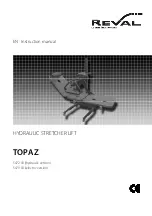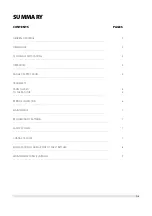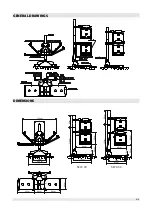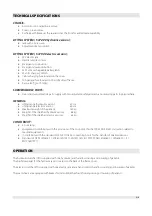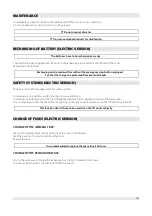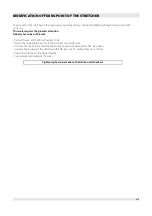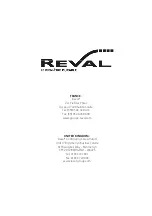
PERIODIC INSPECTION
1) Periodic inspection of the stretcher lift should be undertaken at the time intervals stated by the manufacturer, but at least
once a year. By periodic inspection is meant a visual examination (particularly of the stretcher’s load bearing structure and
lifting mechanism with attachments, brakes, controls, safety devices and person-support devices) and whatever function
tests and maintenance measures may be required, e.g. adjustment of brakes, tightening of fasteners.
Every inspection should include a working load of one (1) lifting cycle with the maximum load.
2) Periodic inspection should be performed by a person who is suitably and properly qualified and well acquainted with the
design, use and care of the stretcher lift. The scope of the periodic inspection should be included in the manual supplied
with the stretcher lift.
3) Any observations of importance for the safety of the stretcher lift should be noted, preferably in a logbook which should
be retained by the person (s) responsible for the servicing/maintenance of the stretcher lift.
The date when corrective actions are taken, in response to noted observations, should also be noted in the logbook.
4) A record of the date of inspection of the stretcher lift and inspection result should be noted in the logbook together with
the signature of the inspector.
Any detachable rigid body support units included in the inspection should be plainly marked for identification and noted in
the logbook. The record should include the situation of use (home or type of institution etc…)
5) If periodic inspection reveals any defect, wear or other damage that jeopardises the safety of the stretcher lift, the owner
should immediately be notified.
In the event of immediate danger to safety, the stretcher lift should immediately be taken out of service. It may then not be
used until the deficiency has been eliminated.
6) Defects and damages of importance to the safety of the stretcher lift that have occurred between inspections and have
already lead to corrective actions should be entered in the logbook.
7) Defects and damages should be reported back to Reval for action.
This feedback should be reported in the logbook.
6/9

